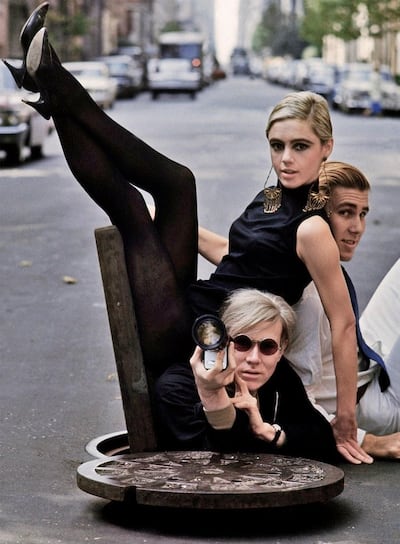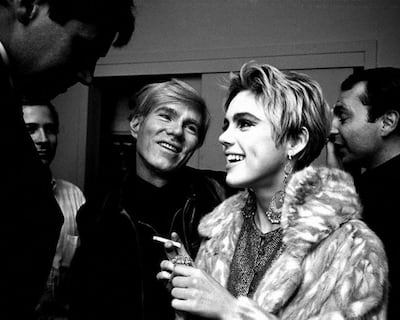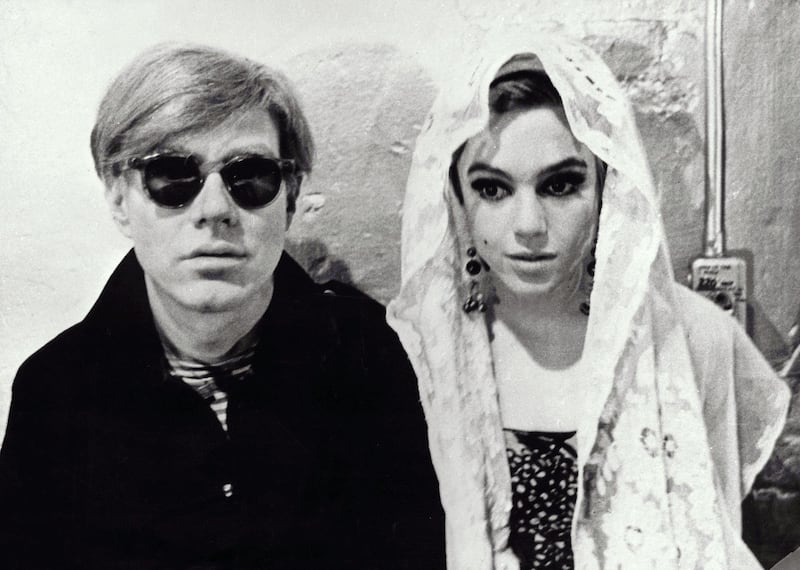Andy Warhol was half a century ahead of his time. In 1968, the New York City artist predicted the current escalation of social media influencers when he wrote in an art brochure: "In the future, everyone will be world-famous for 15 minutes." The prolific pop artist was the inventor of our modern-day filters, when he started to take iconic images of celebrities such as Marilyn Monroe and Elizabeth Taylor, and add his own colourful touch to them.
Warhol also happened to forecast our insatiable craving for reality television programmes, that idea of following someone famous around with a camera all day, watching them eat, sleep and exercise. In fact, he filmed his muse, New York "It girl" Edie Sedgwick doing just that – eating, sleeping, exercising and putting on make-up – in his 1965 film Poor Little Rich Girl.
At this year’s Festival International de Cinema Marseille, a comprehensive retrospective of Warhol’s collaboration with Sedgwick was on view, curated by David Schwartz, chief curator at the Museum of the Moving Image in New York City.
The 29th edition of the festival ran from July 10 to 16, and featured Poor Little Rich Girl, along with other 16mm films by Warhol starring Sedgwick. FID Marseille's programme also included a retrospective of the work of French actress Isabelle Huppert, who gave a masterclass while in Marseille, and films by Albert Serra and Syrian artist Khaled Abdulwahed.
When The National caught up with Schwartz, he revealed the thinking behind the retrospective and why it was so pertinent to the moment. "I developed the idea with Jean-Pierre Rehm [executive officer of the festival]. We felt that because it focused on Warhol's greatest actress, it would provide an interesting contrast to the Isabelle Huppert retrospective," he says. "I also think Warhol's films are a great fit for FID, because they are unique blends of fiction and documentary that make us rethink our ideas about what cinema is."
Sedgwick was beautiful and had a very special sense of style – her signature chandelier earrings, pale skin and heavy eyebrows were her trademarks, and remain fashion inspirations for countless designers, as well as women around the world. She was also deeply fascinating, equally so when seen at home and around town, and seemed a bit broken, which made her all the more intriguing.

The best description of Sedgwick comes from Warhol himself, who wrote in his 1980s memoirs, Popism: The Warhol Sixties, that "Edie was incredible on camera – just the way she moved. And she never stopped moving for a second, even when she was sleeping, her hands were wide awake. She was all energy; she didn't know what to do with it when it came to living her life, but it was wonderful to film. The great stars are the ones who are doing something you can watch every second, even if it's just a movement inside their eye."
So was Sedgwick, through Warhol's films, the predecessor to the Kim Kardashian phenomenon? Was she the original celebrity who let viewers into her inner sanctum and showed common people the everyday goings-on of the more privileged? "Absolutely," answers Schwartz. "Warhol understood the power of the movie camera, to allow people to feel that they can become stars. Edie truly lived for the camera; she was transformed by it, and the camera loved her."
Sedgwick's candle burned bright and fast, which only adds to her mystique. After Warhol discovered her in 1965 at age 21 and made her his muse (his Marilyn, if you will), in about a dozen movies that they made together, he then wrote her out of the last film, Lupe. That's when the already fragile Sedgwick began a downward spiral that eventually ended in her death, ruled as undetermined accident/suicide, in 1971. The perfectly beautiful yet dysfunctional relationship between the artist and the socialite is documented in the films. As Schwartz explains, the movies "were made in 16mm, and truly feel like they are from a different era. They only gain in power over time, because they are made with technology that is no longer used."
This kind of cinema as art should be watched on the big screen, even if in our digital age, most of Warhol’s films are available on the web. The true genius of Warhol’s vision, which included many short-term collaborators like Sedgwick, was his simplicity. In fact, Schwartz points out that “from their description, Warhol’s films seem as though they are going to be very simple, perhaps even boring, but in fact, they are completely absorbing and fascinating and fun to watch”.
The retrospective showcased the comprehensive cinematic collaboration between Warhol and Sedgwick, as well as Charles Henry Ford's Poem Posters, a short film featuring Sedgwick as the life of the party, with Warhol at a star-studded gallery opening. They can be seen hobnobbing with the likes of William Burroughs, Jayne Mansfield and Jack Smith.

Finally, what would the retrospective curator wish for audiences to take away from these films? Schwartz perfectly sums up the value of this work and its place in today’s world when he answers: “I hope that they come away appreciating Warhol’s genius as a filmmaker, and the unique power of Edie Sedgwick’s personality, and the vitality she had before she died so young.”
_____________________
Read more:
Unpublished parts of Malcolm X's autobiography auctioned off
My favourite reads: Rupert Hawksley
The Man Booker prize longlist has been announced and includes a graphic novel
_____________________





